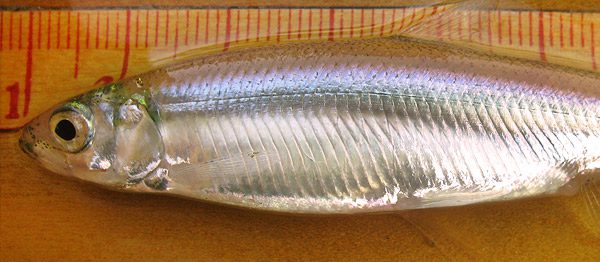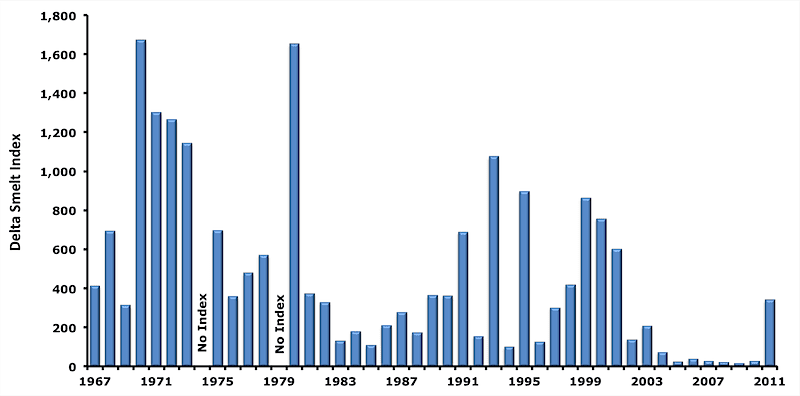Friday January 6, 2012

After a decade of declining Delta smelt abundance, the results of the Fall Midwater Trawl Survey (FMWT) conducted by the California Department of Fish & Game (CDFG) indicate that the population might finally be showing signs of improvement. In 1993 Delta smelt were first listed as threatened under the California and Federal Endangered Species acts (ESA) and in 2010 petitioned for an upgrade to Endangered status but the USFWS determined that it was “warranted but precluded” because of the ongoing 5-year plan information gathering. Population estimates for Delta smelt have been derived from the FMWT abundance index since 1967, and for the last 10 years the index had been far below the average. So when the index bounced back up to 343 last fall, it caused a bit of a stir.

When discussing Delta smelt, one of the first questions we usually get is, “what are Delta smelt and why are we so concerned with protecting them?” The finger-sized fish were once one of the Delta’s most abundant fish species but, due to a short lifecycle of approximately one year, they are extremely susceptible to a changing environment. During spawning season, the Delta smelt migrate up river from Suisun Bay to spawn in sloughs and shallow channels in the upper Delta. After the eggs hatch and the larvae develop swim bladders, they are washed downstream to the salinity-mixing zone. In the next several months, the Delta smelt will grow to around 3 inches before returning to the spawning reach and completing their lifecycle. Since they are so vulnerable they are considered to be a key indicator species in the Sacramento-San Joaquin Delta, and their decline has been linked to an overall decline in the health of the estuary. Furthermore, if the Delta smelt became extinct it could create a cascade of effects that would impact other species within the food web, such as Chinook salmon and striped bass.
This increase in abundance of Delta smelt is a positive sign for the estuary’s ecosystem. It is important to not only consider how the higher than usual outflow in 2011 may have affected the Delta smelt population and the habitat that it utilizes, but to also recognize that many actions have been taken in recent years to recover the population. A goal of the Sacramento-San Joaquin Delta Native Fishes Recovery Plan is to evaluate and determine how these management decisions have benefitted the Delta smelt population.
